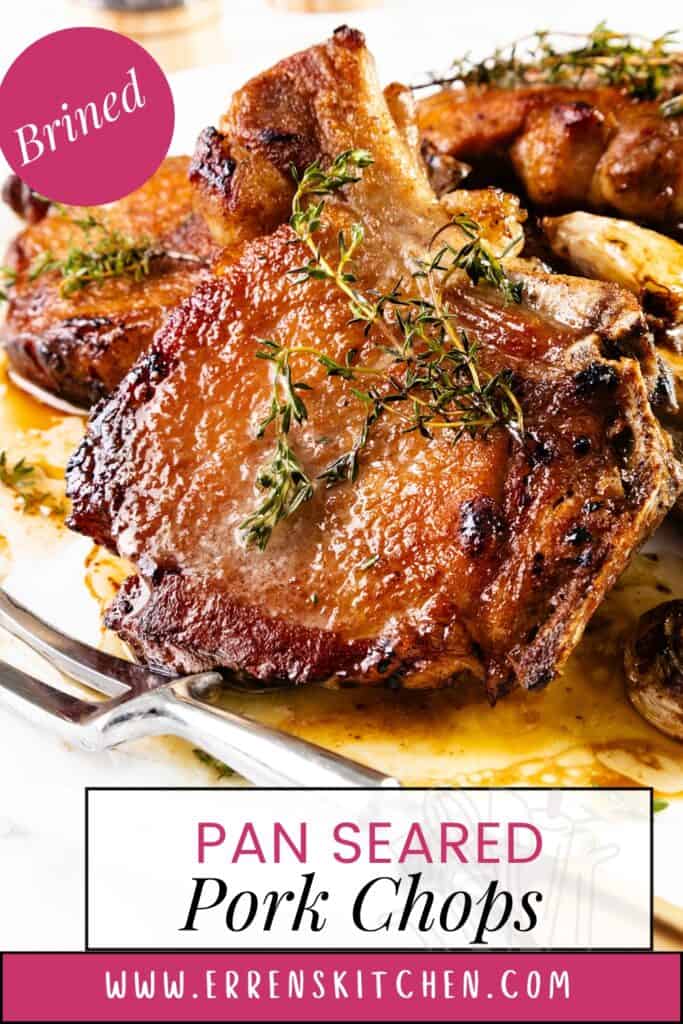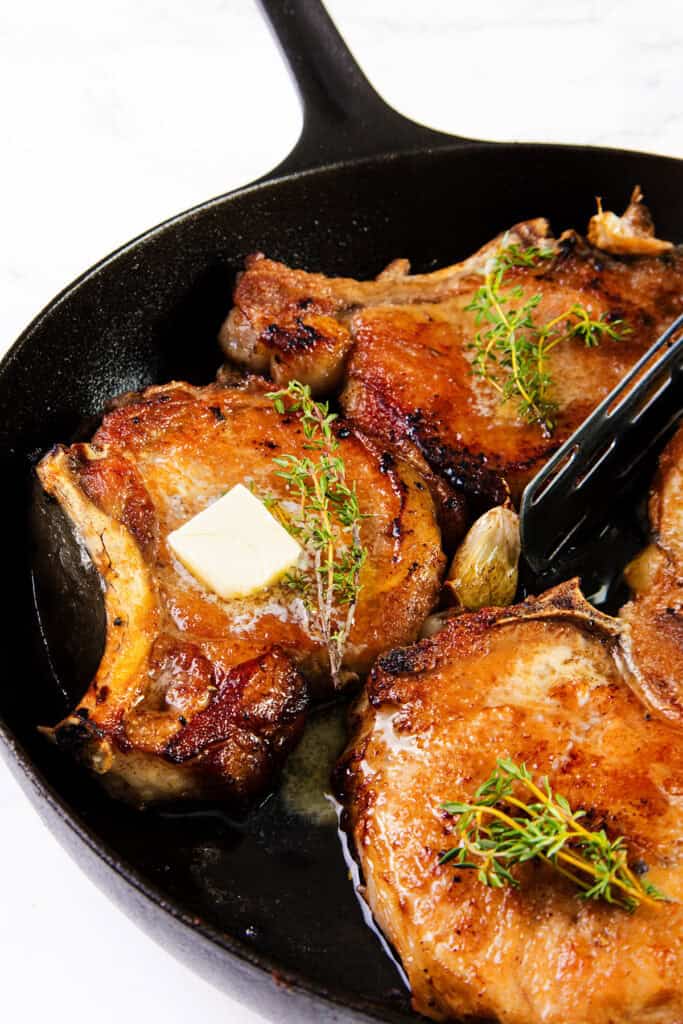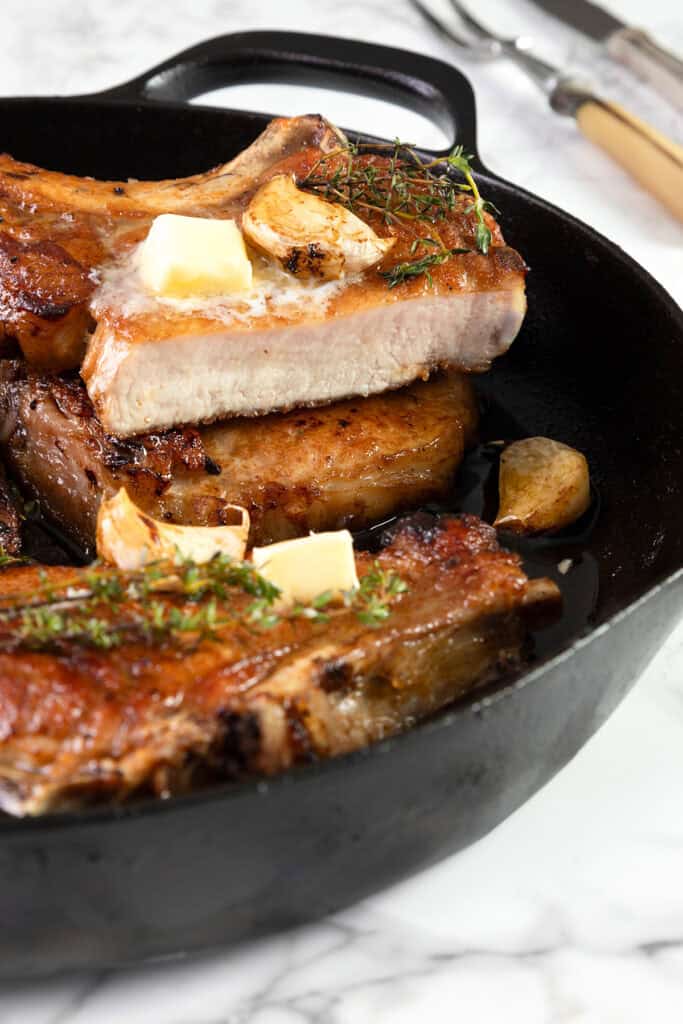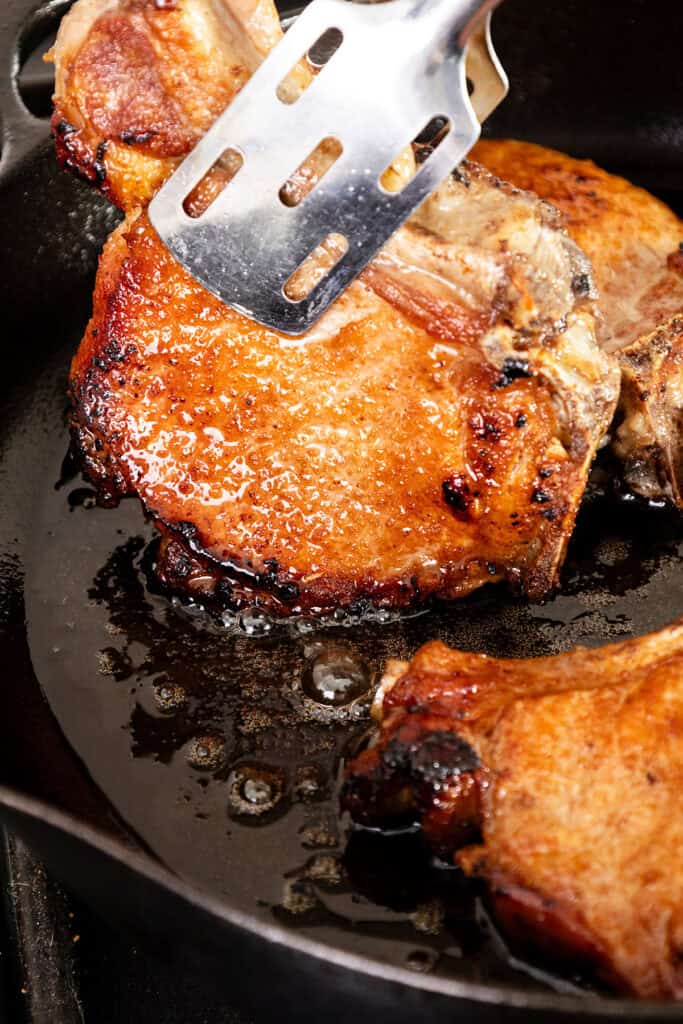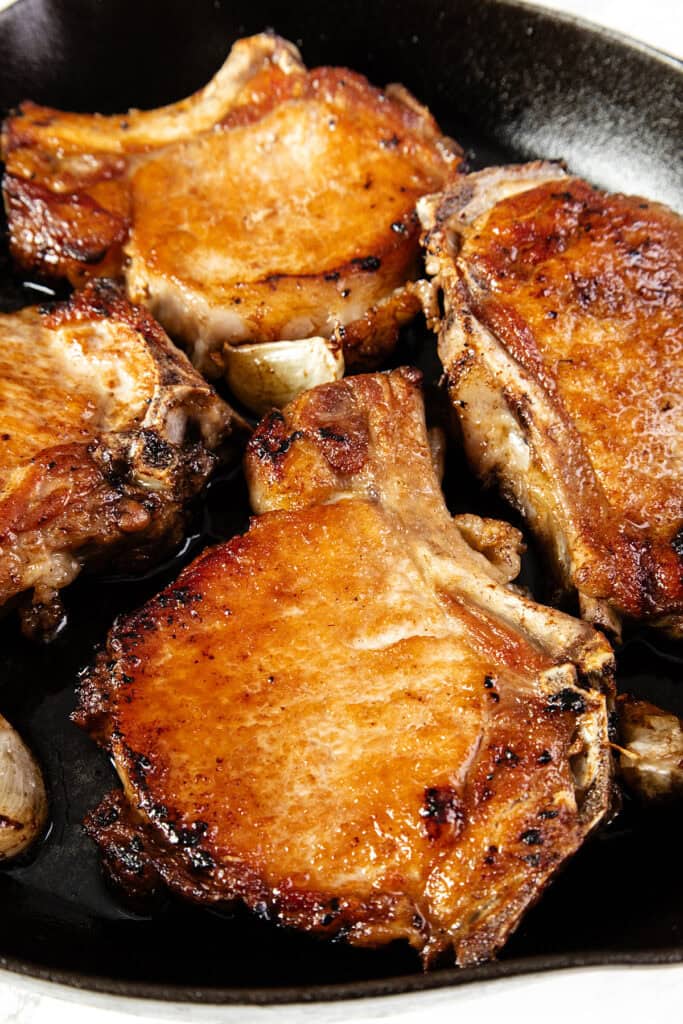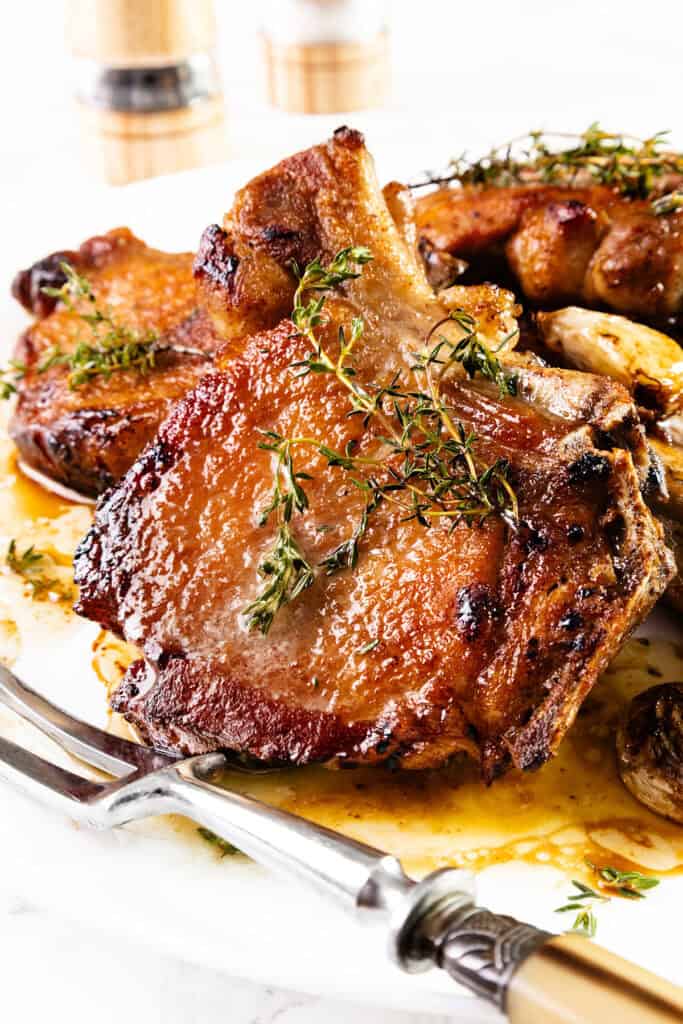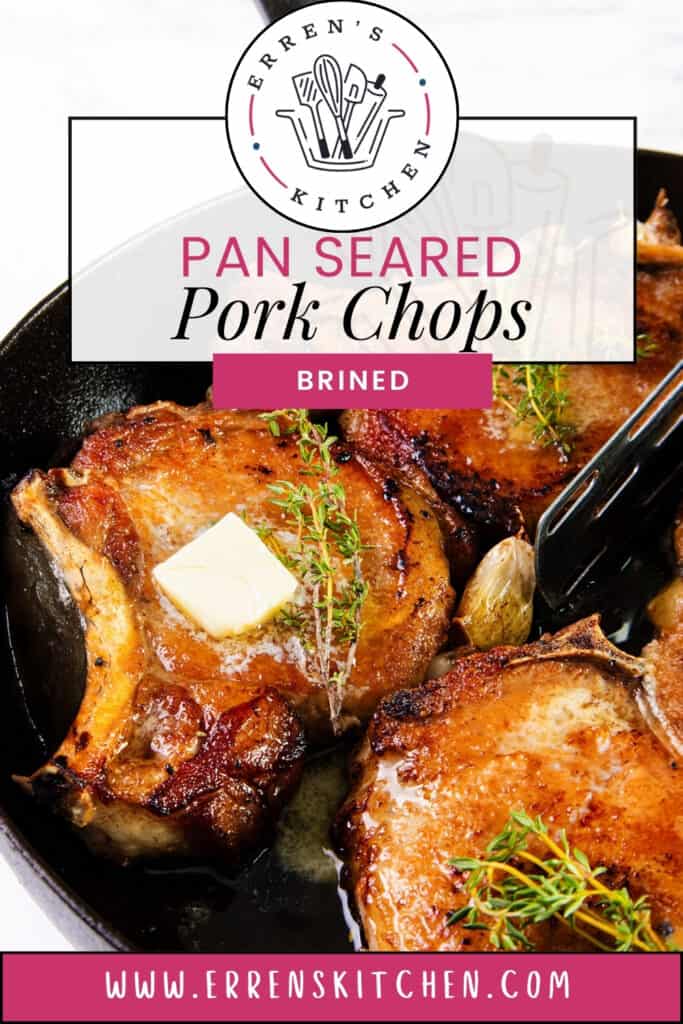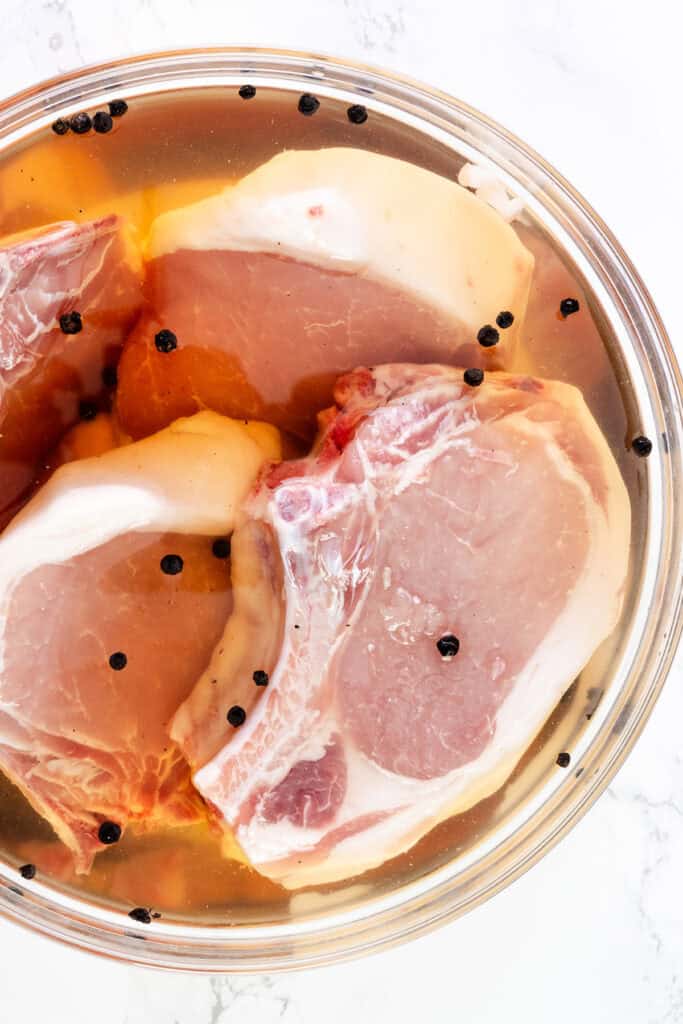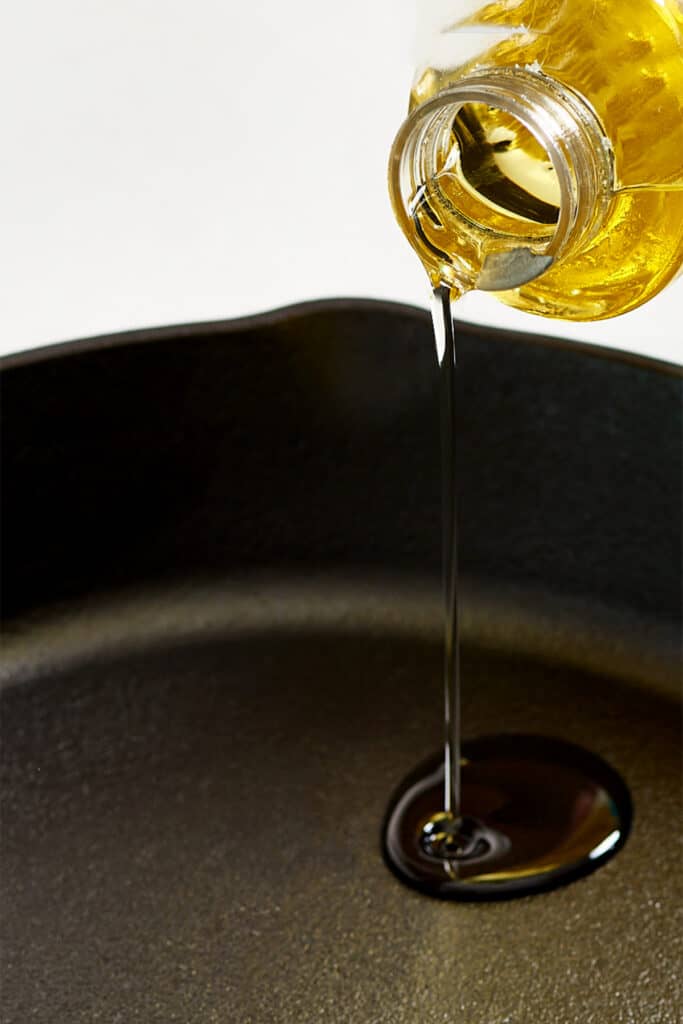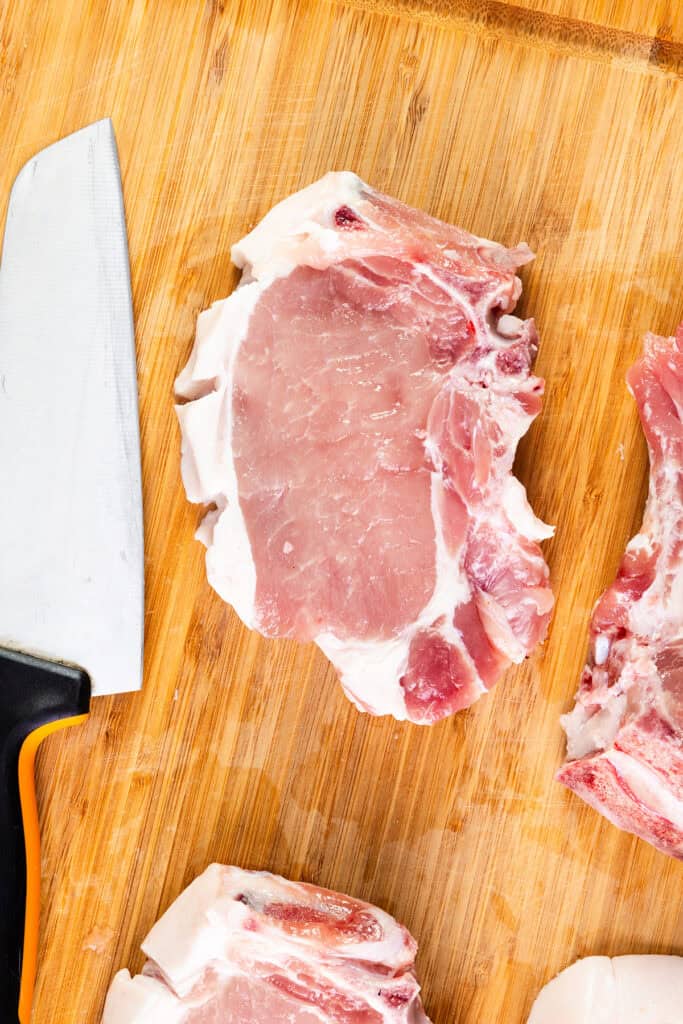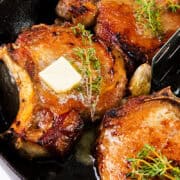Up your weeknight dinner game with this delicious seared pork chops recipe that uses the superb flavors of garlic, thyme, and butter. It’s a simple weeknight dish the whole family will devour! Pork chops are a favorite in our house; when they are cooked well, they are guaranteed crowd-pleasers. Serve them alongside mashed potatoes and a side of roasted green beans for a really special midweek meal.
How To Pan Sear Pork Chops
Place the water, salt, baking soda, peppercorns, and brown sugar in a large bowl and stir to dissolve the salt and sugar. Add the pork chops, cover the bowl with plastic wrap and refrigerate for 1 to 8 hours.
How to Use a Meat Thermometer
Insert the thermometer through the side of the pork chops and push it through to the midpoint. If they have a bone, avoid hitting it, as this will skew the result.
If food safety is your main concern, cook the pork to well-done.
Download the above Pork Chop Temperature Table to save for later, or print it out for your convenience.
Remove the pork chops from the brine. The baking soda may cause them to feel slippery. This is completely normal. Dry them well by patting them with paper towels. This step is crucial as moisture will steam the meat instead of searing it when it hits the pan. Drying the meat well helps develop a golden crust and allows the meat to cook evenly.
Coat your pan with two tablespoons of canola or vegetable oil (as they have a higher smoke point). You only want a thin layer of oil, so swirl it around to evenly coat the bottom of the pan.
Preheat your pan well. This is important as a high temperature is needed to achieve a caramelized, deep-colored sear on the surface of the meat. I recommend using a heavy-bottomed cast iron or stainless steel pan for searing meat. A nonstick pan will now always allow the crust to form properly.
While the pan heats, if your chops have a fat layer along the outside, score the fat with a knife making the cuts about 2 inches apart.
Scoring the fat allows the pork chop to relax, so when the fat cooks and renders, the meat will stay flat on the pan instead of curling like it would if the fat was left intact.
When the oil in your pan starts to shimmer and slightly smoke, add the chops. When the meat hits the pan, it should sizzle loudly (like applause). If it’s not a good loud sizzle, remove the meat and let the pan heat a little longer.
Once you’ve put the meat in the pan, let it cook with uninterrupted contact with the pan for a good three minutes to properly sear (I know it’s tempting to have a little peak, but trust me – don’t move the chops). While letting the chops do their thing, add the unpeeled garlic cloves to the pan to flavor the oil.
The meat will stick to the pan at first and then release naturally when properly seared. After a few minutes, shake the pan to see if the meat is released from the pan. Once it does, it’s ready to flip.
Flip pork chops to the uncooked side down and cook uninterrupted for another two minutes. The second side always browns quicker than the first. Once it browns, start turning the chops every two minutes until both sides are golden brown and reach 145°F in the thickest part.
If the fat is thick and hasn’t cooked down, pick up the pork chop with tongs, and hold the pork chop upright, with the fatty edge of the pan. Cook until the fatty edge get’s crisp and brown, about 2 minutes.
Once the pork chops reach an internal temperature of 145°F, remove from the heat top with the butter and thyme, and allow it to melt.
Transfer the chops to a dish, and cover loosely with foil (you don’t want to wrap the foil tightly around the meat). Allow the chops to rest until they reach an internal temperature of 145°F to 150°F (for medium doneness) before serving.
Erren’s Kitchen is written and produced for informational intentions only. We are not certified nutritionists, and the nutritional information found on this site has not been assessed or authorized by a nutritionist or the FDA. The nutritional information found in our recipes is offered as an estimate and should not be considered a guarantee or fact. The estimated data is provided as a courtesy and calculated through a third-party online nutritional calculator, spoonacular API. Although we do our best to provide accurate nutritional information, these figures should be considered rough estimates. Many factors, such as brands or products purchased and the nutritional fluctuations that naturally occur in fresh produce, can alter the effectiveness of the nutritional information in any recipe. Furthermore, various online calculators provide different results depending on their particular algorithms and nutrition fact sources. To obtain the most precise nutritional information in a provided recipe, you should calculate the nutritional information with the exact ingredients you are using when preparing the recipe using your preferred nutrition calculator.
